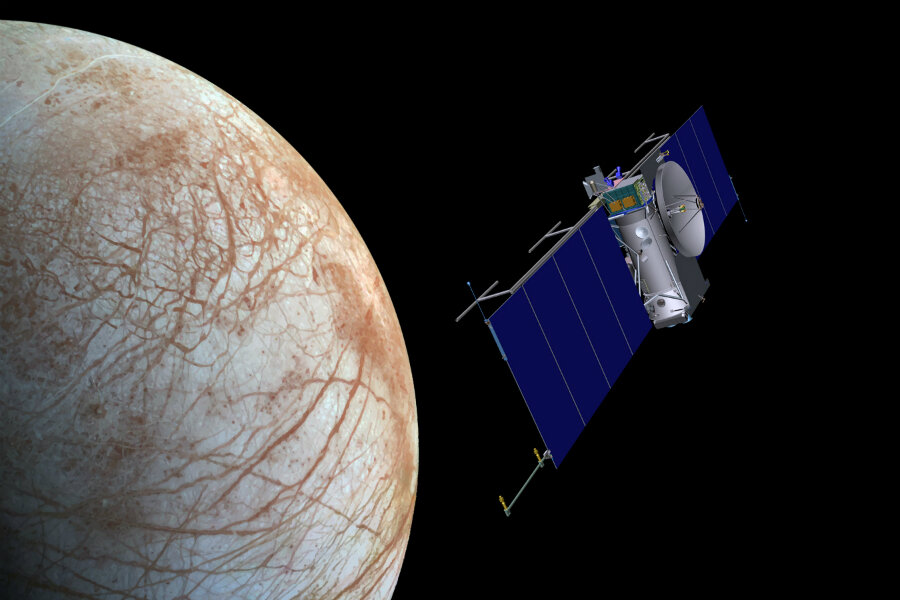Why NASA is so interested in Jupiter's frozen moon
Loading...
On Monday, NASA will share new revelations about Europa: It won’t be aliens, the agency says, but it will be “surprising.”
In a press teleconference, NASA is slated to discuss images of Jupiter’s ice-covered moon captured by the Hubble Space Telescope. In recent years, Europa has been a major focus of the agency’s interplanetary research.
Why is NASA so interested in this humble moon? Because it’s our solar system’s primary candidate for harboring potential life, thanks to the hidden ocean beneath its frozen surface.
"If we've learned anything about life on Earth, it's that where you find the liquid water, you generally find life," NASA astrobiologist Kevin Hand explained in a 2014 Jet Propulsion Laboratory video. "So what if I told you that there is an ocean out there, beyond Earth? An ocean in our solar system, that has been in existence for billions of years?"
Europa’s vast ocean might very well dwarf our own. According to some models, water could cover the planet’s entire subsurface. The ocean itself could be 10 times as deep as Earth’s, with up to three times the total water content.
But how did such an ocean come to exist on this frigid moon? Just thank gravity. As Europa orbits Jupiter, tidal forces cause the moon to flex. Those contractions create friction and heat, which keep the liquid water from freezing. The same forces could even give rise to hydrothermal vents, which may provide chemical nutrients and energy for potential life.
"We used to think that in order for a world to be habitable, you had to be just at the right distance from the sun, or whatever your star was," said Dr. Hand, a researcher at NASA's Jet Propulsion Laboratory. "Here's where Europa is a real game changer.”
But to determine the moon’s viability, scientists must determine its actual chemical makeup. In May, a NASA modelling study found that Europa could produce Earth-like ratios of hydrogen and oxygen – a necessary combination for life as we know it.
The Monitor’s Corey Fedde reported:
Oxygen is the easy part of the equation. Europa is close enough to Jupiter to be 'bathed' in radiation.... The radiation is able to split apart the molecules in the ice abundant on the surface of the moon and produce oxidants, oxygen, and other chemical compounds capable of reacting with hydrogen. The oxidants could then be carried by the surface into the ocean below.
On Earth, hydrogen and many other chemicals necessary for life as we know it were produced by volcanic activity. Since there are no known volcanoes on Europa, researchers needed to find a different hydrogen source – in this case, a small chemical reaction called serpentinization, which occurs when saltwater and rock make contact.
As cracks in the moon’s crust opened over time, they could expose fresh rock and produce more hydrogen. In the end, researchers found that Europa may produce a 10-1 oxygen-hydrogen ratio, which is close to Earth’s own ratio.
Of course, even if there is life on Europa, there’s still the question of getting there.
Of NASA’s 2016 budget of $19.2 billion, Congress allocated $175 million specifically for the “Jupiter Europa clipper mission.” The craft would include an orbiter and a “soft lander,” which would be lowered to the moon’s surface via rocket-powered sky crane.
The Monitor’s Jeff Ward-Bailey reported:
Once on the surface of Europa, the lander would use small saw blades to collect ice samples from several inches below the surface. If it can reach a crevasse, it could use other instruments in its payload to learn about the composition of the ocean beneath – and, possibly, about microbes living there.








